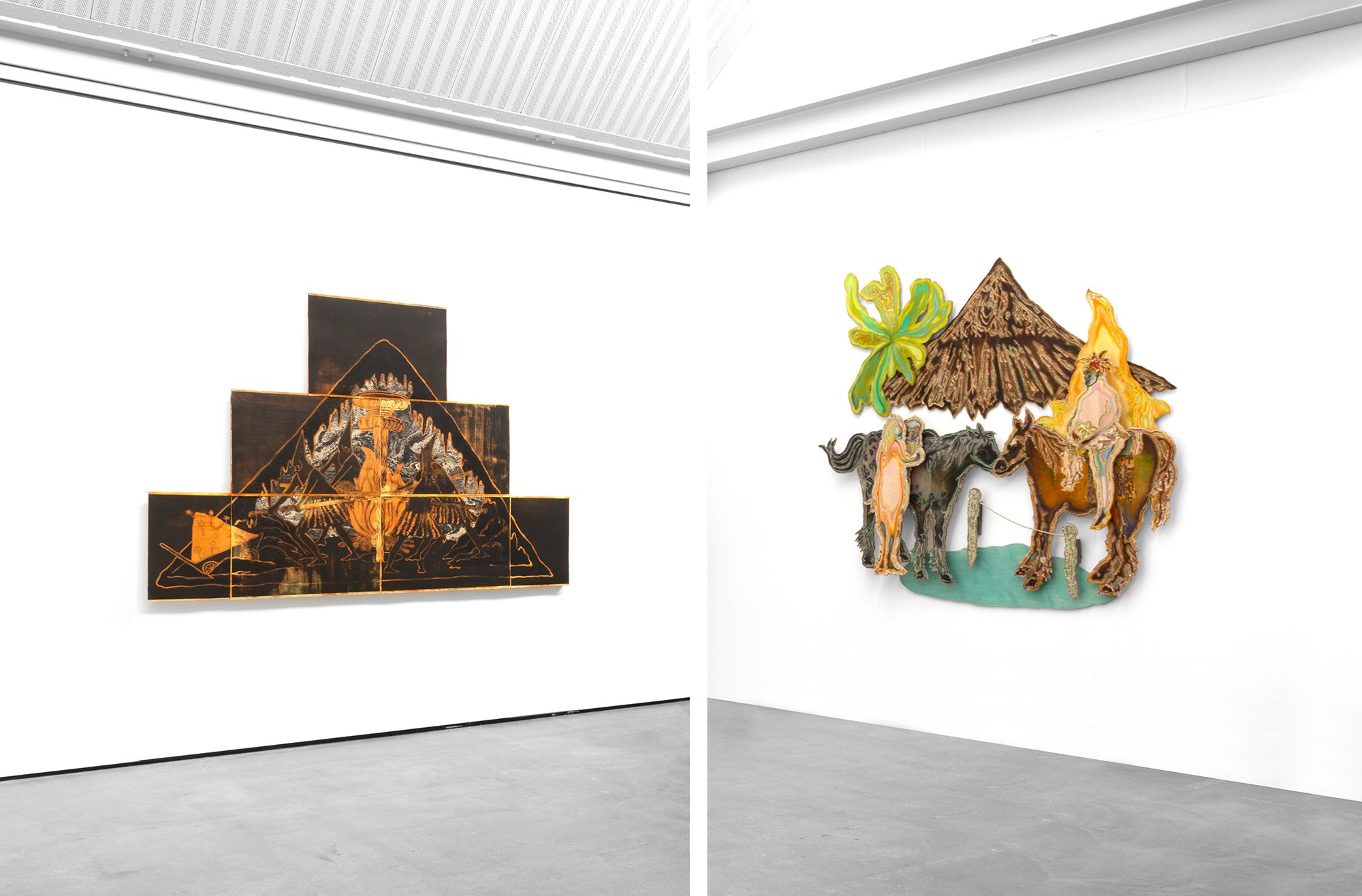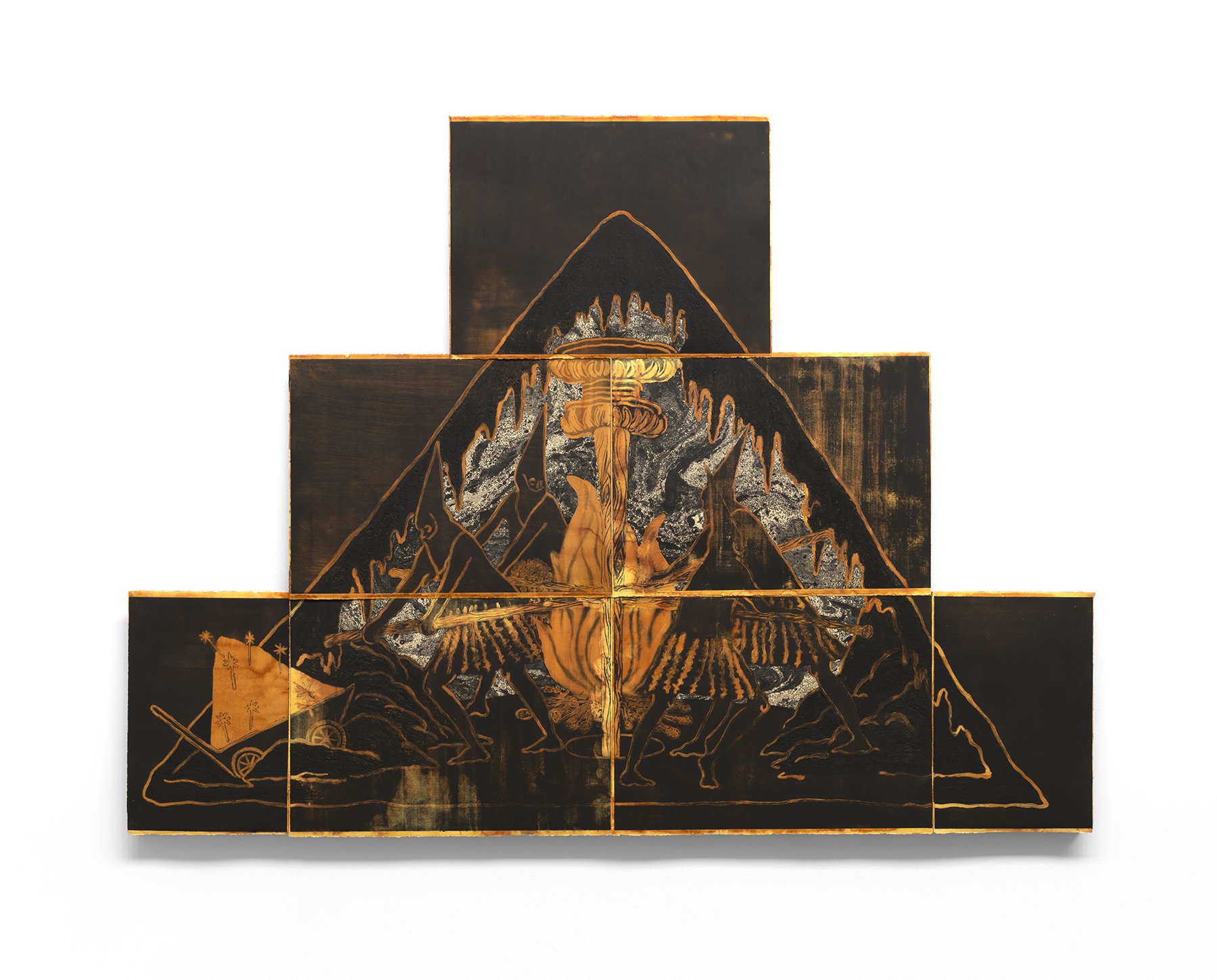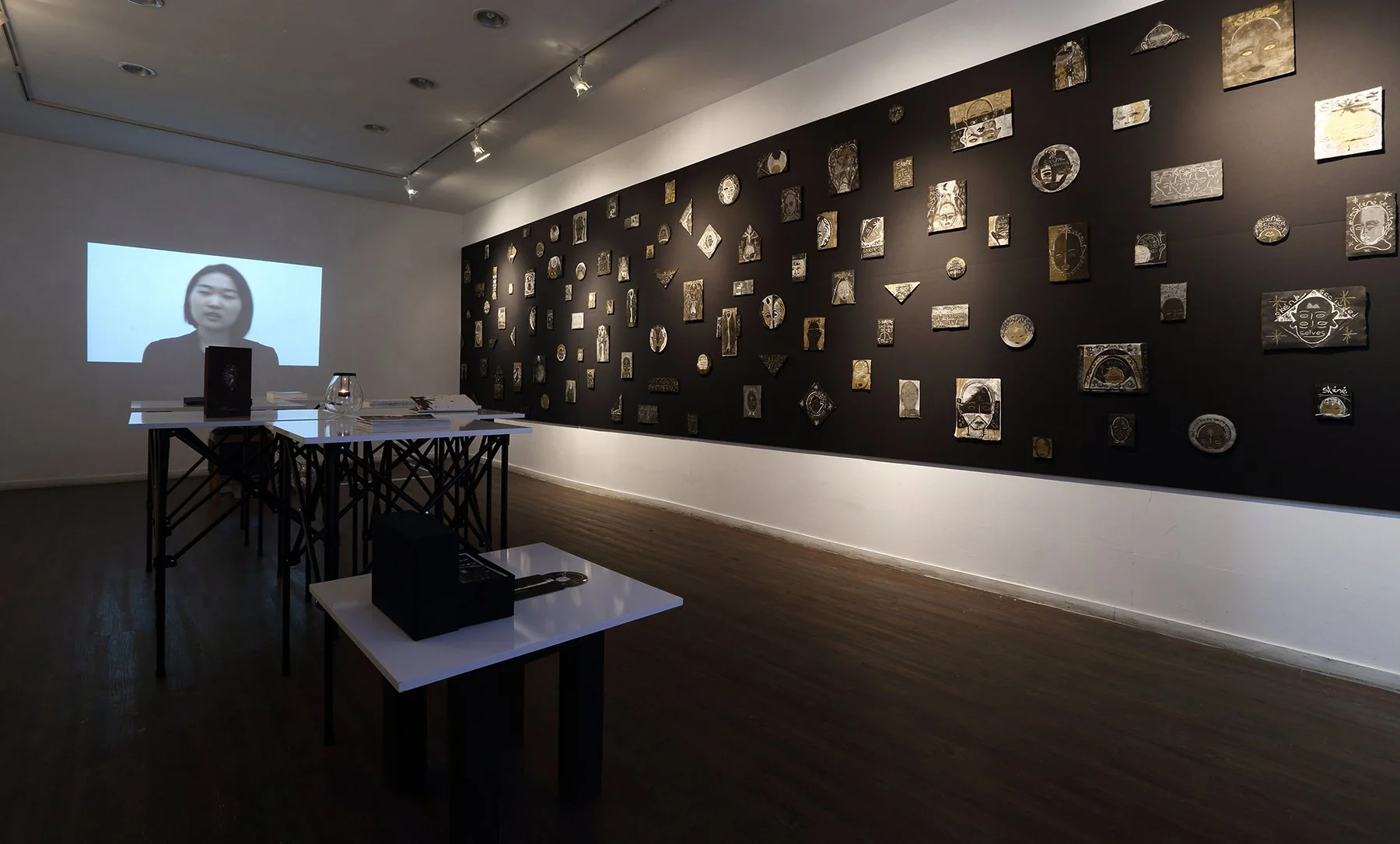An Interview with Shinyoung Park
We often trawl through the graduate profiles of students and recent grads of Printmaking programs in the United Kingdom to discover who is doing what. Our perception (and Graham’s more first-hand experience from his undergraduate studies) is that printmaking is taught quite differently at UK art schools. More emphasis is placed on how print methods or techniques can integrate into a more multi-faceted studio practice, or be used in service to the conceptual underpinning of a particular body of work or installation. When I encountered Shinyoung Park’s work during a journey through the website of the Royal College of Art Printmaking program we felt like she epitomized that approach and we’re excited to share our conversation.
Installation views of Royal College of Art Degree Show, Dyson Building, RCA, 2018
When did you start printing?
My first memory of printmaking is the relief print class I took at school when I was 12. I got to know the unique aesthetic of printmaking and how to use it to imply a message or a scene. And I was greatly impressed by an exhibition of Francisco Goya’s etchings around the same time. I figured out that printmaking is an appealing medium for conveying the truth of real life.
The Cycle, 56x76cm, Monotype on paper, 2018
What was your experience during art school with printmaking?
I studied painting at my undergraduate and graduate schools of Seoul National University in South Korea and during this period, I took some printmaking classes. Sometimes, I felt I was under pressure when painting. I felt like I was partaking in a lonely battle to build a whole scene completely under my control. In this situation, printmaking offered a kind of breakthrough for me, as though the interaction with the press I had to relinquish some kind of control, and my tension was eased. The marks on the plate become squashed, slipping and fading through the pressure of the press, yielding unexpected outcomes. At the time, I aimed to pursue both the unpredictability of printmaking and freewheeling gestures of painting through the technique of monotype.
After this, I realized a necessity to explore the potential of printmaking and pursued this through studying the Print MA course at the Royal College of Art in London between 2016 and 2018. I enjoyed the atmosphere of the print department, which focuses on a multidisciplinary approach to printmaking, rather than following its traditional role. In particular, group critiques awakened me to questions such as ‘Where am I from?’ and ‘Where am I now?’. I learned how people interpret images based on different cultural backgrounds and how to convey my ideas through visual language to them. It was a fresh experience for me to understand myself objectively as well as to absorb cultural diversity in my work.
From Sunset to Dawn, 38x28.5cm, Ink and wine on paper, 2019
Bats on the rainbow, 38x28.5cm, Copper pigment, ink and wine on paper, 2019
How do you see your print background informing your more expanded practice?
I don’t work with fixed ideas about art and media, rather, I enjoy applying the principle of one field to another and mixing them for a new approach. As I mentioned before, I see printmaking very much as an expanded field of fine art and this has enabled me to explore other fields broadly, and also more boldly. Printmaking is flexible enough to be transformed into any form.
As I create images in the process of interacting with the press, I apply this principle of expanded art-making to my drawing. I think images can be self-decisive. I wait until the image itself reacts to my action, keeping the tension between me and the form. I draw images with water based inks on thin paper. I scratch the surface hard with a nib just like in the engraving process. The final images look like intaglio prints. And as you know, prints are the results of the vestige remaining after action. Likewise, I consider the relationship between an image and its afterimage. I draw onto drawing books to create images with ghost image effect as the Image on the front page permeates through to the back page, lingering as a stain. This stain acts as a clue for me, driving the creation of the following image. Like playing around with ghost images in print, it makes a series with variation like multiple editions.
For me, printmaking is the art of conditions and flexibility. Although it sounds incompatible, this irony gives me the following intriguing issues to think about: ‘What is fine art or craft?’ and ‘What is painting or print?’. I deal with these issues by crossing the borders. Sometimes, my expression hinges on the conditions of print such as size, technique and labour-intensive processes. But, this point pushes me to find ways of working I’ve not tried before. The two works I showed for my degree show at the RCA are examples of this. Planning to make a large-scale etching, I was limited somewhat by the size of the press, so I used six plates to compose a pyramid shape to create the work, The Roller of Endless Labour. For me, the shape of the pyramid signifies the limit and potential of printmaking simultaneously. And the shape resonates with human labour in the history of a salt mine as well as my physical labour to print.
Semana Santa in Londa, 91x23.5cm, Ink, watercolor and wine on paper, 2017
The Roller of Endless Labour, 225x165cm, Varied Edition of 5, etching on paper, 2018
As for the other work, You Cannot Know the Mind of Horses, I created a drawing and printed it as a small etching print peculiar to line effect of sugar lift. Printing an etching requires certain materials with cushioned surface like soaked paper. However, to make a multiple- layered piece, I aimed to keep the unique expression of the etching as well as to overcome its limit in size and material use through screen-print. So, I scanned the etching digitally in high resolution, and re-created it as a screen-print on birch wood panels of which the size is about five times bigger than the original. And to give painterly gestures, I carved, burned and worked oil painting onto the screen-printed wooden surface. Is this piece a painting, a print or a sculpture? I like to create these ambiguous points for the audience and printmaking enables me to create something beyond existing categories.
You Cannot Know the Mind of Horses, 180x192.5cm, screenprint, wood-burning, woodcut and oil paint on Birchwood, 2018
You Cannot Know the Mind of Horses (detail), 2018
Meanwhile, I question the issues of originality, ownership and forms of display in the field of fine art through my print background. Exclusiveness causes hierarchies in the art market. I often wondered why fine art is harder to share, differing from literature, music, and movies. However, I think that prints have democratic power based on their potential for multiplicity. With this point, I intend to make an artists’ book which could be exhibited and possessed in more intimate ways. A 2014 collaborative project, for which I worked with classics composers and a designer, was the trial for this. In this project, I experimented with the possibility that an original work can be distributed in a public-friendly form visualized as 300 book editions. I hope to share them in public libraries someday.
Skene:secluded selves-collaboration, Artists' Books (six offset-printed books / edition of 200), 23.5x16.5cm, 2014. (Art Direction & Image: Shinyoung Park/ Composition: Sae-am Kim & Seung-yon Kim / Design: Wonseop Lee)
Skene:secluded selves-collaboration (installation view) in Cyart space, Seoul, Korea, 2014
Who would you love to collaborate with?
I am happy to work with artists and technicians in any field. Communicating with them leads me to a curious view of art, creating synergy for both of us. I like to collaborate with people who does their work sincerely, not as a means for money, power, and vanity. And I am very motivated by open-minded people who push themselves to their limits, rather than compromising with an easy-going attitude to work.
Where do you now typically make your work? Home studio? Shared print space?
I currently work at a shared studio in Seoul, South Korea. Despite the advantage of a shared studio in the exchange of knowledge and skills, I prefer to use a studio alone. Because I become very sensitive during working, I always struggle to hold the balance of my senses. I figured out I need a place with a tranquil and self-concentrated atmosphere. For this reason, I plan to find an independent studio next year. I totally agree with the saying of Agnes Martin; “The best things in life happen to you when you’re alone. It is hopeless if your studio atmosphere cannot be preserved.” A studio is the place where you can be yourself.
The Street Performers, 20.5x29.5cm, Ink and wine on paper, 2019
What are you working on at the moment?
I am currently focusing on a series of drawings inspired by my trip to Morocco last year. Most of my recent work is a record of traveling to unfamiliar places as a stranger. During travels, I am fascinated by certain scenes. Some scenes are related to the awe of mother nature and others are about local people and animals that show the hard reality of the region, differing from the exaggeration of tourism. I have time to internalize these scenes after traveling. I recall them from my memory and irrelevant information is intervened during the process. Finally, the scenes are transformed into imaginative drawings.
I also started working with ceramics at the beginning of this year. Ceramics encompasses the characteristics of drawing, printmaking and three-dimensional works. In particular, I find that both ceramics and printmaking are art of plan and coincidence. And it’s inspiring that clay remembers all your touches and that as a material it transforms from solid to liquid state in the fire. How metaphysical and imaginative it is! I hope to combine drawing, print and ceramics in my next set of works. Crossing borders is my artistic attitude.
A Shell in the Desert, Ceramic, 2019










